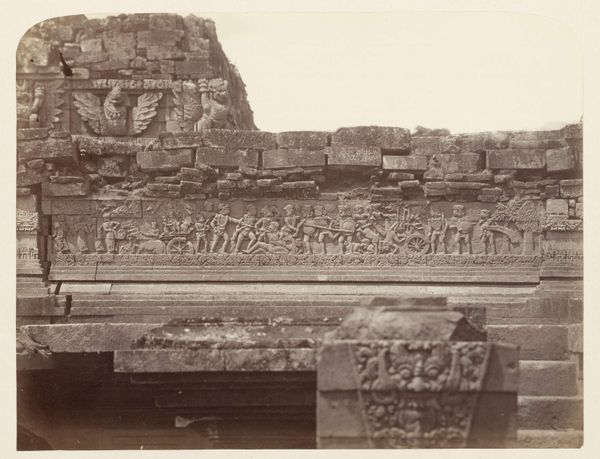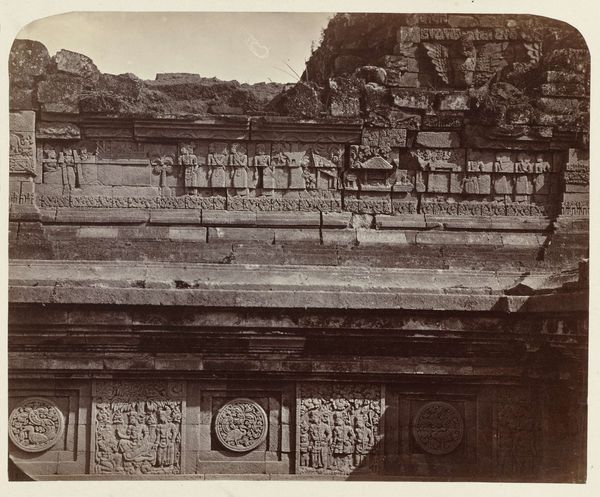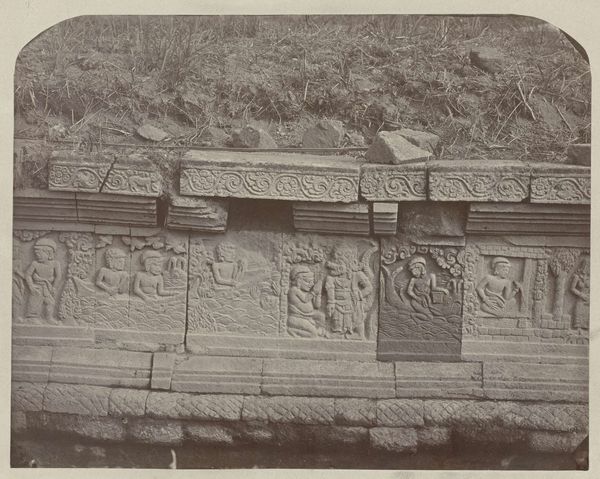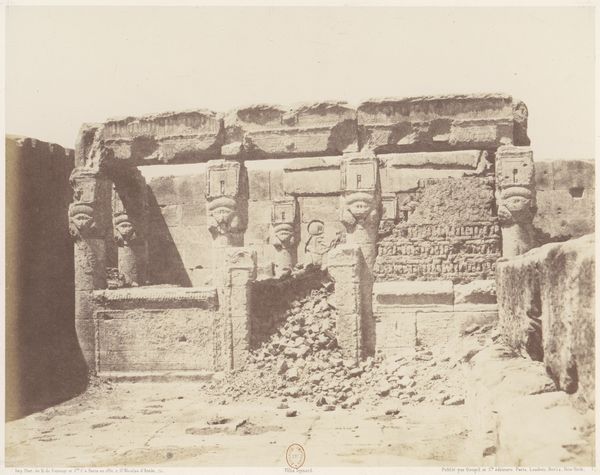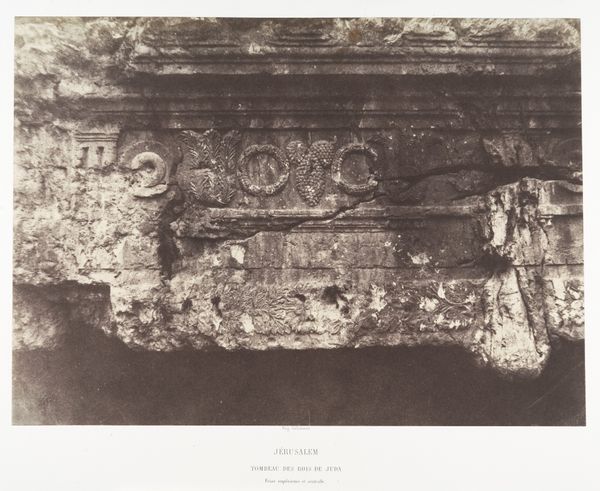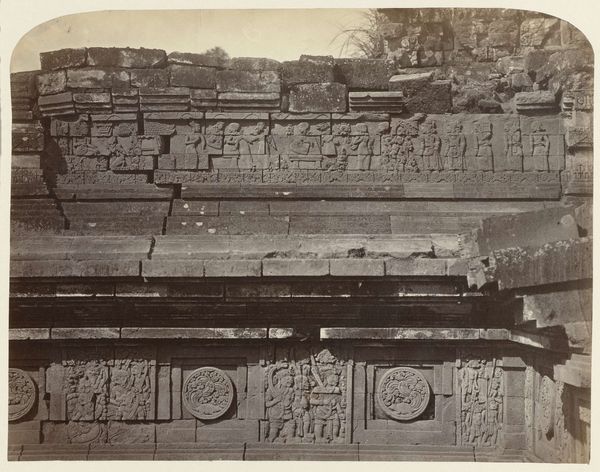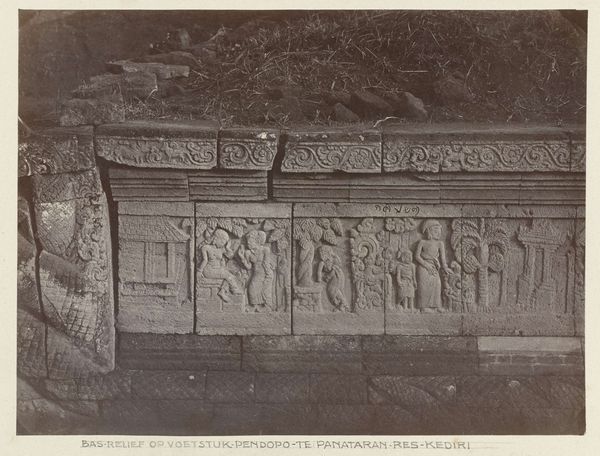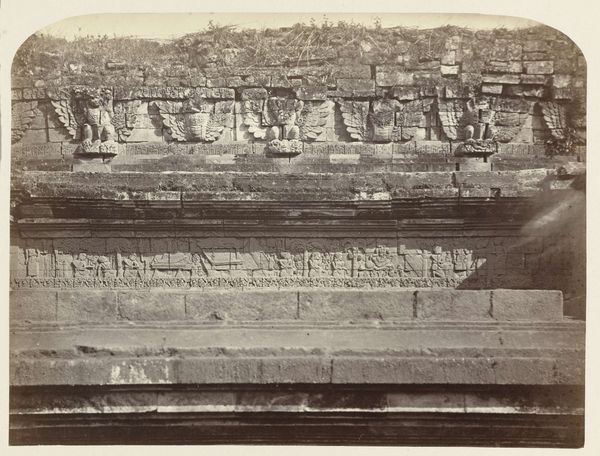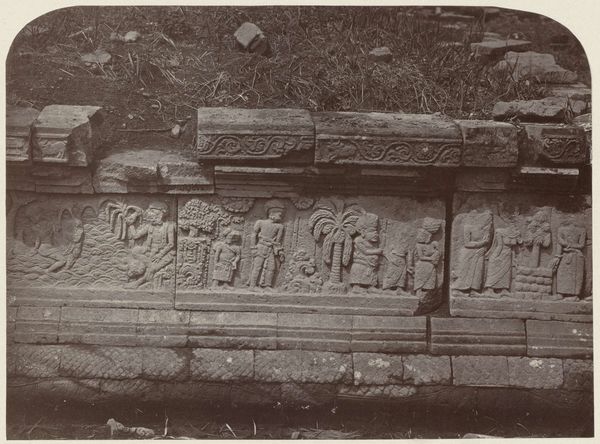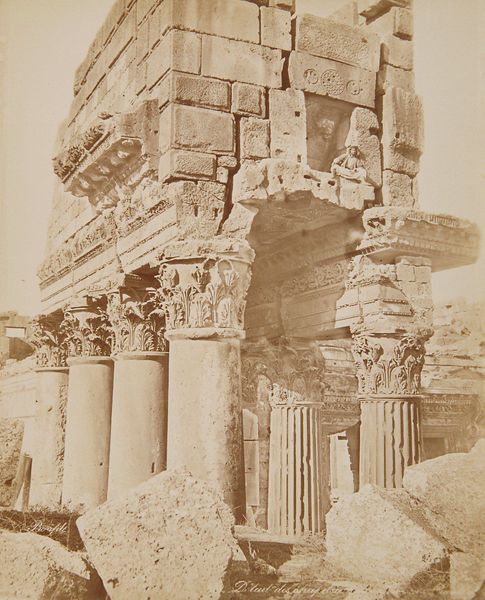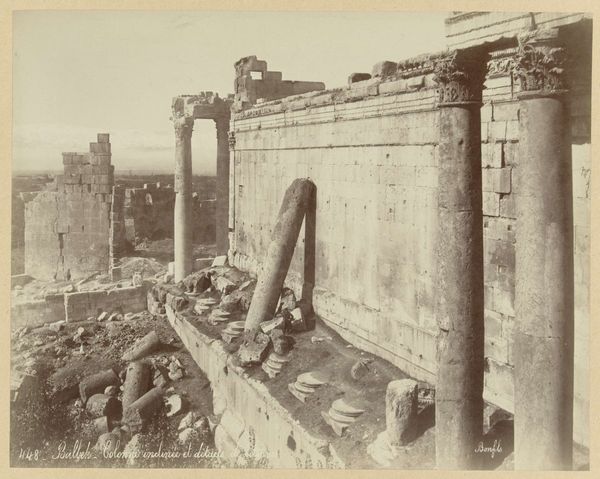
Basreliëf met Krishna verhaal in tempelcomplex candi Panataran aan de zuidzijde. Possibly 1867
0:00
0:00
print, relief, bronze, photography, gelatin-silver-print, marble
#
narrative-art
# print
#
relief
#
landscape
#
bronze
#
indigenism
#
figuration
#
photography
#
geometric
#
ancient-mediterranean
#
gelatin-silver-print
#
islamic-art
#
history-painting
#
marble
Dimensions: height 290 mm, width 340 mm
Copyright: Rijks Museum: Open Domain
Curator: Looking at this gelatin-silver print, what strikes you first about the image of this bas-relief? Editor: It has an aura of antiquity. The textures are incredible—rough stone surfaces, the worn details of the relief, and the play of light create such depth. The scale feels monumental. Curator: Indeed. Here we have Isidore Kinsbergen's photograph, possibly from 1867, capturing a bas-relief narrating a Krishna tale at the Candi Panataran temple complex on its south side. Notice how photography became instrumental in documenting cultural heritage during this period. Editor: The medium definitely affects my interpretation. The gelatin silver print lends the relief a specific kind of tonality, almost sepia-toned, highlighting the erosion, the wear, of time—as if the photograph itself becomes a kind of historical artifact. Curator: Absolutely. Kinsbergen's choice to use photography allowed for a wide distribution of these cultural icons to audiences far removed from the physical location of the temple. How might access to these depictions impact interpretations of Southeast Asian narratives? Editor: I'm captivated by the story seemingly unfolding across the stone. The procession of figures, animals, and chariots suggests a narrative—a frozen moment in an ancient epic. But more specifically, consider how that freezes labor, in that very specific instance within that era. What tools are they holding? What position within their social hierarchy are they assuming? Curator: The relief itself acts as a material record of a culture's belief system and artistic practices. The time and labor that went into carving it! Editor: And think about the craftspeople. Each precise incision on the surface contributes to the story's visual tapestry. From a formal standpoint, the arrangement and detailing invites us to carefully decode the story bit by bit, figure by figure, shape by shape. Curator: The act of photographing it, then, introduces another layer of authorship and artistic intent. Kinsbergen made choices about framing and exposure, essentially re-presenting the narrative for a new audience. It transformed access. Editor: This makes one appreciate how materials—gelatin, silver, stone—carry distinct histories and associations. They inform how we understand these artworks. Curator: I find myself contemplating the circulation of these images in the context of colonialism and the gaze of the West on Southeast Asian culture. Editor: Ultimately, this image serves as both an artwork and an historical document, urging us to think deeply about its formal components and its production context.
Comments
No comments
Be the first to comment and join the conversation on the ultimate creative platform.
